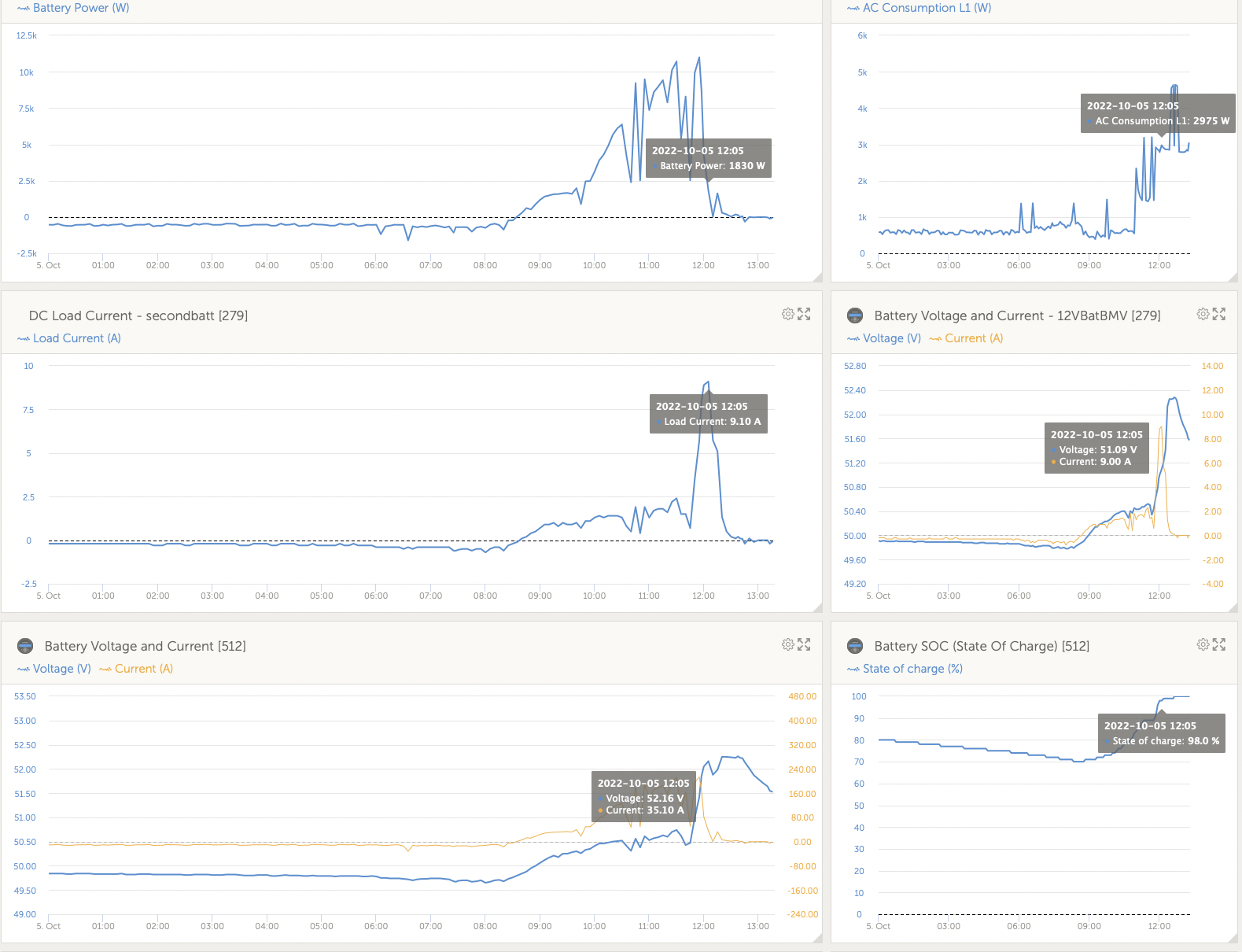Hey there,
I've already done a couple of installations which all runs fine. I always stick to the "Unlimited wiring" guide for best DC / AC cabling. Normally there is plenty of space to have one big battery bank with equal DC lengths (f.e. multiple Pylontech + Victron Lynx).
Now I will install a bigger bank on a boat (catamaran) and would like to know which way would be best. Both options have pros & cons, maybe there is a third option I don't have in mind.
There is a bit space in each hull and in the middle of the catamaran. Which makes me have 4 spaces for the batteries.
Each battery pack will have it's own BMS. In total the battery will consist of 144x 280Ah Lifepo cells.
Keep in mind that in the schematic are no fuses and kill switches. Surely they will be add in the installation.
The normal use during driving will most likely draw only 2-4 kW in total. But the system has to be capable of maintaining 6kW to both engines over a couple of hours if necessary.
Left Option like Page 19 at wiring unlimited "Diagonally":
Pros:
- should make equal current on all banks
- only one battery monitor (shunt)
Cons:
- horrible long cables, about 28m for each + and - cable to the bus bar. Another 9m for each engine (just 125A)
- a couple of volts drop even with 120mm2 cable
Right Option like Page 19 at wiring unlimited "Busbars":
In this case the cable itself is the busbar.
Pro:
- shorter cables
Cons:
- 4 batteries in Victron System (not a problem at all, monitoring will be through (modified) MarineMFD App on a Raymarine MFD)
- unequal usage of batteries
- batteries in hulls will be discharged faster and get less charge than center batteries!?
I think (hope) last point shouldn't be a problem when laying on anchor the banks should be equalling themself, right?
Anyone tested this?
I also had the idea to build real separate banks and use Orion 48/48 to charge the banks for the engines. But the Orions are really getting only near 90% efficiency and I think that is a bit to much inefficient as the engines will be the biggest consumers.
Schematic:




